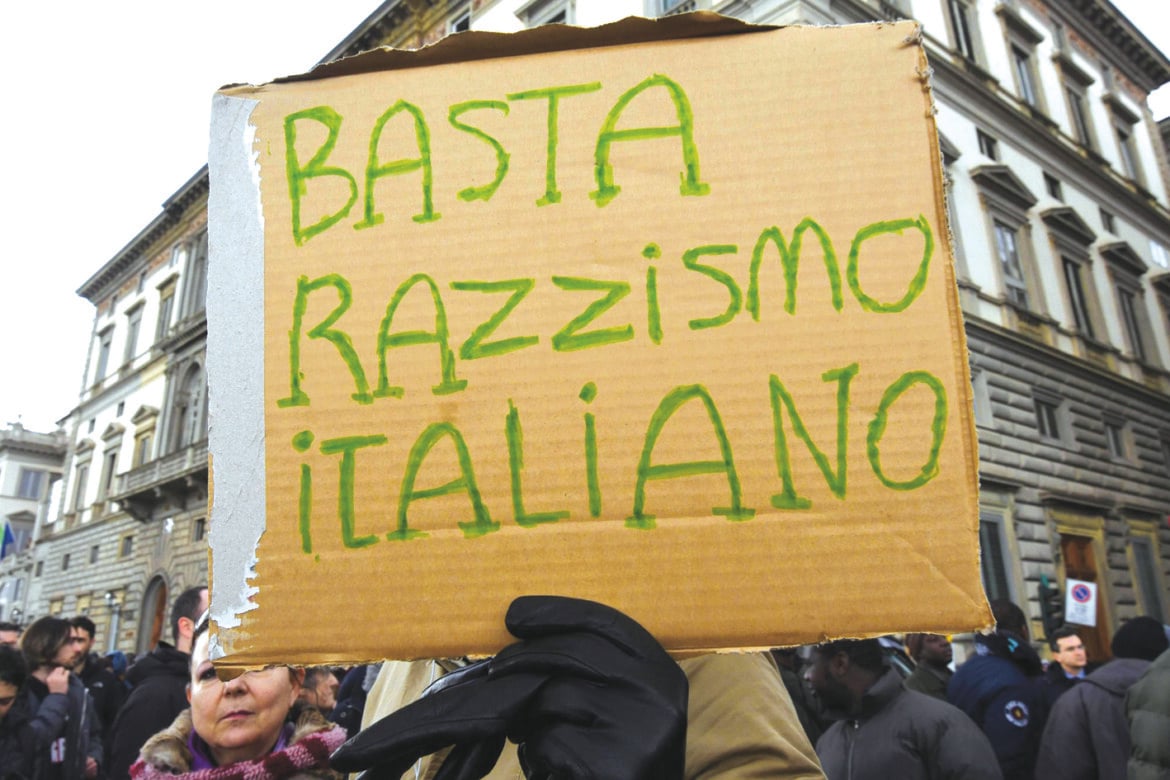Analysis
Remembering Abba and the long list of racist murders in Italy
On September 14, 2008, Abdul William Guiebre, “Abba” to his friends, died following a racist attack in Milan. His story has not been forgotten thanks to initiatives like the anti-racist festival Abba Vive, now in its 17th year.

He was beaten to death with an iron bar because he was Black. On September 14, 2008, Abdul William Guiebre, “Abba” to his friends, died following a racist attack in Milan. He was only 19 years old.
Born and raised in Italy to parents from Burkina Faso, Guiebre was returning home with friends after a night at a club. The group stopped at a cafe for pastries, leading to an argument with the owners, a father and son, who accused the youths of stealing a few euros’ worth of merchandise – a box of cookies.
The two men chased Guiebre and his friends with an iron bar. Catching up to him on the street, they insulted the young man with racist epithets and struck him repeatedly. Abba died in the hospital a short time later from his injuries.
At the initial trial in 2010, Fausto Cristofoli and his son Daniele were sentenced to 19 years in prison for voluntary homicide, aggravated by trivial motives. The following year, an appeals court reduced the sentence for both to 16 years, ruling that the racial motivation initially argued by the prosecution had not been proven. The Supreme Court of Cassation, Italy’s highest court, upheld the conviction in 2013.
His story has not been forgotten thanks to initiatives like the anti-racist festival Abba Vive, now in its 17th year. It thus falls to family, friends, or, in the most well-known cases, NGOs and social centers to keep alive the memory of the often-faceless victims of the systemic racism that afflicts Italy. Abba’s story is not an isolated one.
A few days after Guiebre’s murder, on September 18, 2008, seven Camorra hitmen in Castel Volturno fired 120 bullets, killing six Black men: Kwadwo Owusu Wiafe, Ibrahim Alhaji, Karim Yakubu, Kuame Antwi Julius Francis, Justice Sonny Abu, and Eric Affun Yeboah. The testimony of the massacre’s sole survivor, Joseph Ayimbora, proved crucial to reconstructing the events and identifying the killers. At every stage of the legal process, the aggravating factor of racial hatred was confirmed.
Ten years later, on February 3, 2018, the white supremacist Luca Traini carried out a racist shooting rampage against Black people in Macerata. The names of the wounded – Wilson Kofi Omagbon, Jennifer Otiotio, Gideon Azeke, Mahamadou Toure, Omar Fadera, and Festus Omagbon – were barely mentioned in the major newspapers, which were busy spilling rivers of ink on the “lone wolf” Traini, a candidate for the Lega Nord party in the 2017 local elections and self-proclaimed “avenger” of Pamela Mastropietro, an eighteen-year-old girl killed in Macerata by a Nigerian man.
A few weeks after that, in Florence, Idy Diene, a Senegalese citizen, was shot and killed on the Vespucci bridge on March 5, 2018, by Roberto Pirrone, supposedly “because he was the first person to walk by.” The killer always maintained he chose his victim at random after leaving home with the intention of taking his own life. But more than one surveillance camera contradicts his version. Pirrone hesitated for a long time before pulling out his gun and firing on Idy, a man well-known in Florence’s Senegalese community and connected to the victims of another racist massacre: his compatriots Samb Modou and Mor Diop, murdered by the neo-fascist Gianluca Casseri on December 13, 2011.
But it took the global protests over the murder of George Floyd in Minneapolis to turn the Italian media spotlight onto the victims of racism in Italy. During the summer of 2020, names and stories that had been culpably relegated to the margins of the crime pages began to circulate again – old, forgotten news like the story of Ahmed Ali Giama, a homeless Somali refugee burned alive next to Piazza Navona in May 1979 by a group of youths.
His story is dramatically similar to that of Frederick Akwasi Adofo, a homeless man from Ghana who was beaten to death by two underage killers on the night of June 18, 2023, in Pomigliano d’Arco, near Naples.
Compiling an exhaustive list of racist murders in Italy is impossible, but one of the most heinous was undoubtedly that of Giacomo Valent, a sixteen-year-old Italian-Somali killed on July 9, 1985, in Udine by two schoolmates. He was murdered with 63 stab wounds for trivial and meaningless reasons – but without premeditation, according to the judges. At the first trial, the perpetrator was sentenced to fifteen years and his accomplice to ten. The sentences were increased on appeal and later confirmed. His mother, devastated by grief and already in poor health, died a year after her son’s massacre.
“We just wanted to teach him a lesson,” said the killer, who was only fifteen. He was, according to contemporary news reports, “a young man who was not ashamed to leave the house in a black shirt with a fascist badge and rings with swastikas on his fingers.”
In a 2020 article on “Italy and its George Floyds,” university professor Angelica Pesarini wrote that “it is easier to show solidarity, express empathy, shed tears, and grant the benefit of the doubt to a Black man killed thousands of miles away than to a Black man in Italy.”
Five years later, Pesarini’s reflection is still relevant. Racist murders are often reported as isolated criminal cases, disconnected from one another. Many claim that acknowledging the structural nature of racism is an “ideological distortion” to be vehemently rejected. Although the violence – both institutional and individual – directed at Black bodies is real, a significant part of the country still prefers to take refuge in the self-absolving myth that “Italians are good people.”
Originally published at https://ilmanifesto.it/abba-e-gli-altri-il-lungo-elenco-degli-omicidi-razziali-in-italia on 2025-09-14
